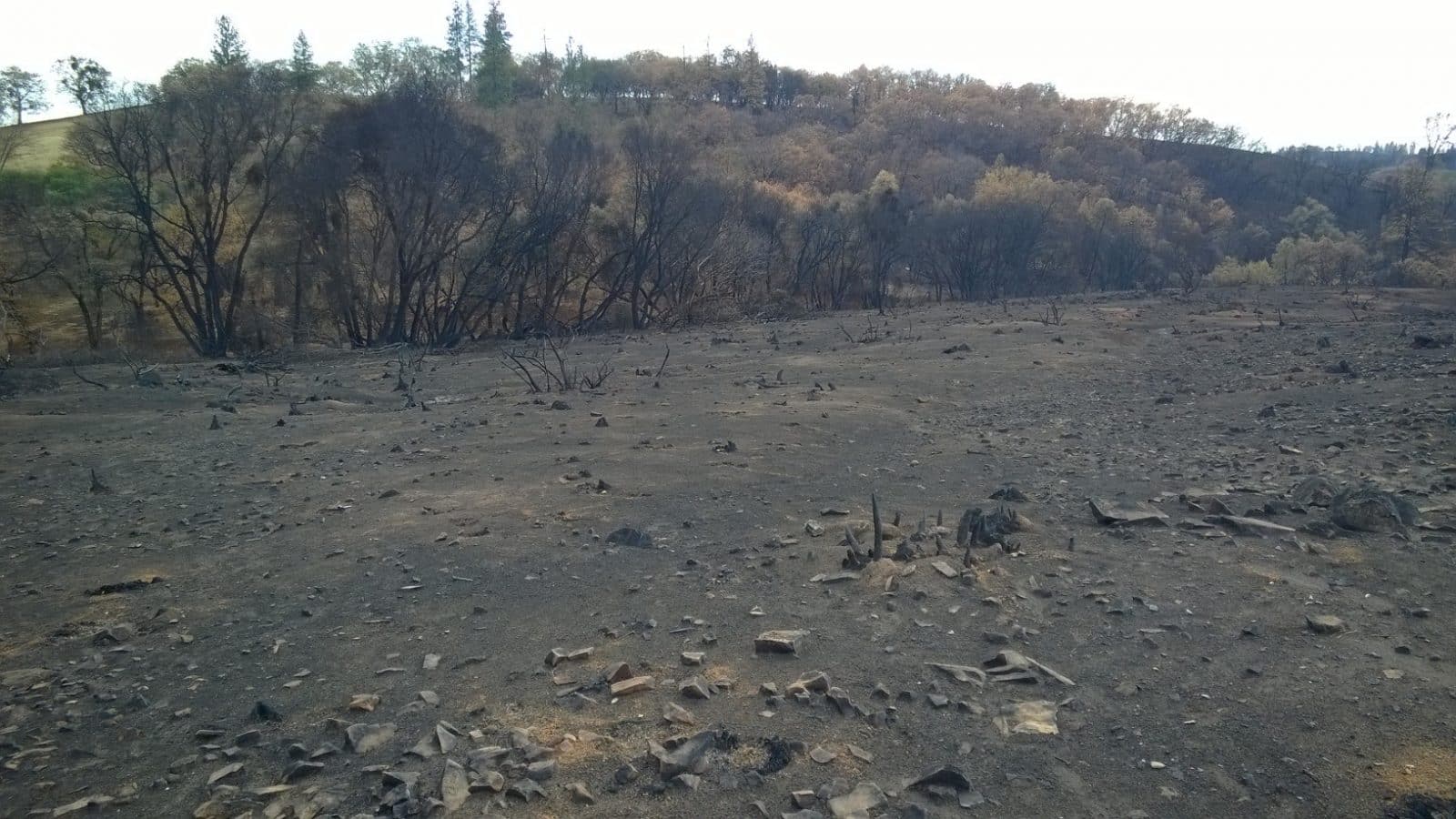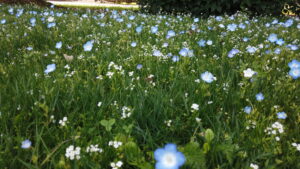After the devastation, Mother Nature begins to rebuild and the American seed industry is there to help.
On a beautiful Wednesday evening in late September, more than 400 individuals packed the auditorium of California’s Shasta College in Redding. They weren’t there for a concert or theatrical performance. They weren’t there for a political rally. They were homeowners, landowners and residents there with note books and file folders in hand to learn about wildfire recovery efforts, what they can do to help and the resources available.
The Redding area was hit especially hard with three separate wildfires, quickly spreading due to high winds and eventually merging, creating one massively burned area.
As a state, California is witnessing one of the worst wildfire years on record with more than 1 million acres burned, according to the California Department of Forestry and Fire Protection. Excluding U.S. Forest Service numbers, burned acres are at
620, 743, double that from last year and nearly three times the five-year average.
Across the West more than 8 million acres have burned in 2018 alone, according to the National Interagency Fire Center.
Fragile by nature, many of these Western ecosystems are on the brink of being forever changed. These desolate landscapes are at risk from eroding soils, invasive weeds and deteriorating water quality. That’s why it’s critical to get new seed planted and established as soon as possible.
Orlin Reinbold of Landmark Turf and Native Seed, headquartered out of the Pacific Northwest, says it’s about preservation.
“We need to focus on protecting that resource immediately,” Reinbold says, adding that these plants help clean the air and hold the soil in place, preventing erosion and possible water contamination.
Working behind the scenes is a small but vibrant sector of the seed industry that specializes in environmental and conservation seed. A few of the companies working in this space include Buffalo Brand Seed LLC, Clearwater Seed, Curtis & Curtis Inc., Landmark Turf and Native Seed and Pacific Coast Seed.
“What we do is critical to putting the environment back to what it was originally, before the fires, before the mines, oil fields and wind turbine sites,” says Mark Peabody, general manager for Curtis & Curtis Inc., a third-generation family-owned business in Clovis, N.M., that specializes in native forbs, wildflowers and native grasses.
With a niche market, the team at Curtis & Curtis hand collects seed and harvests with a combine, depending on the restoration site and its needs.
Another company that specializes in hand collections is Pacific Coast Seed, a California-based company that’s been in business for 35 years.
David Gilpin, president of Pacific Coast Seed, has a love for plants and the land.
“I really enjoy the rare trips I get to make with my crews to … make wild collections and then we are able to return the seed to the land,” Gilpin says. “The process of watching some of the large scale restoration jobs start from searching out new plants in new environments to growing them and delivering them back to the project, and then going back some years later to see how the project has developed is very rewarding.”
Peabody explains that it’s important to get new seed into the ground because it starts the soil stabilization process.
“We need to get something in there that has quick establishment that will cover the ground and provide the soil stabilization and keep the soil from eroding,” he says. “There’s a good chance for these highly erodible areas to wash away so we need products with quick establishment and that also provide long-term solutions, such as habitat for wildlife.”
On the Ground
Long before the seed is planted to restore damaged sites, the men and women working for these companies are hard at work to ensure quality seed.
While each company is structured a bit differently in its business model, all place an emphasis on quality.
Wayne and Jacie Jensen are seed growers in Genesse, Idaho, for Clearwater Seed.
Jacie has dedicated her life to collecting and preserving native species in the Paradise Ridge area. Some of the plants she’s working with are very labor intensive and are hand harvested, such as catchfly which is sold in grams.
“Quality is huge,” she says. “We don’t always succeed but then it doesn’t get sold.”
Nearly every morning, the Jensens are working to ensure quality in what they’re providing. They spot spray off types, and walk the fields and hand rogue grass fields.
They don’t just grow seed for conservation efforts, the Jensens practice conservation. They’ve been doing no-till for 30-plus years and soil health has been a long-time goal. Jacie explains that every year they’re trying something different. This year, they’re seeding cover crops, which is different than in the Midwest because of the rains.
After the seed is harvested, it goes through a cleaning process, and providing clean seed to customers is one of the most important aspects to ensuring quality.
Down in New Mexico, Peabody explains that everything goes through their cleaning process.
“We keep our facilities extremely clean and make sure we keep our products separated and prevent any contamination,” he says. “We love what we do because it is about quality. Whenever a customer calls, we have confidence in our product and that it’s of good quality.”
Once the seed has been grown, harvested and cleaned, it’s ready for to be shipped out as is or mixed with other seed species, depending on the site’s needs.
Seeding Success
Because many of the lands impacted by wildfires are public lands, the native and conservation seed sector works closely with the U.S. Bureau of Land Management, National Forest Service and Natural Resources Conservation Service to meet their needs in caring for the land and working to restore it.
“The relationship between Forest Service, BLM and NRCS and ourselves is very important,” says Dustin Terrell of Buffalo Brand Seed. “The decisions they make can and will affect us in multiple ways and whether or not we as an industry can supply or have what they need at the time that they need it.”
After a Colorado fire, the Forest Service hired Buffalo Brand Seed to supply seed for aerial application to the side of a mountain.
“We got to go back up with the Forest Service and look at the site a year later,” Terrell says. “To see green again in a world that was all black a year before was really rewarding.”
That’s what it’s really all about: preserving the land and resources.
“We have one planet. We have one place to live and X amount of soil. Without maintaining and managing it, we have no future. We have to take care of it … we have to protect the things that sustain us,” says Mark Mustoe, founder and co-owner of Clearwater Seed in Spokane, Wash.
Terrell says: “Everything starts with the seed, whether it’s seed for cattle and livestock or seed for food.”
Back in that dark Shasta College auditorium, a woman whispers into her husband’s ear, “do we have hydrophobic soils?” The husband shrugs his shoulders uncertain about the conditions.
“We’ll have to test it,” he says, as attendees listen intently to the lineup of speakers about how to evaluate the landscape around their homes and determine the best strategies for moving forward and restoring the land around their homes.













